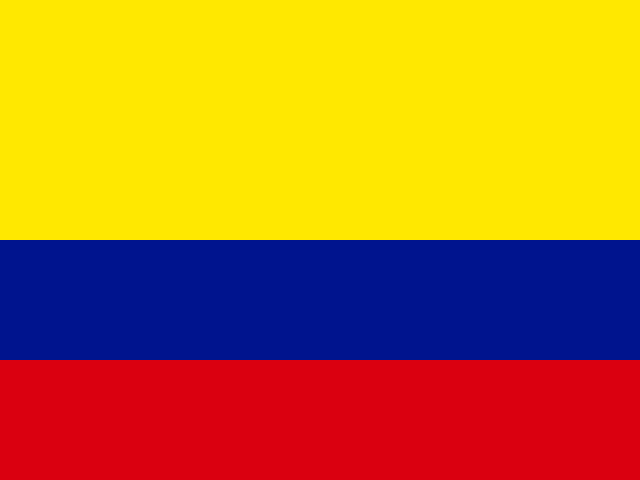
Colombia
Social media news consumption in Colombia combines legacy journalists and digital-first creators. Outlets such as Caracol, RCN, Semana, and El Tiempo remain central, and several of the most mentioned individuals (e.g. Luis Carlos Vélez, Daniel Coronell) are currently or were previously tied to television and radio. At the same time, satirists and creators aimed at young audiences feature prominently.
Walter ‘Wally’ Rodríguez stands out among the digital-first voices and has been outspoken in his support of President Gustavo Petro. A lawyer-turned-commentator, his Late Show-inspired YouTube channel Wally Opina blends satire and legal analysis, winning him the Simón Bolívar award for opinion and analysis on television in 2019. Alejo Vergel is part of the same wave: a pro-Petro commentator whose live streams, explainers, and interviews have attracted a sizeable YouTube following. Levy Rincón (Notiparaco) brings a sharp satirical edge with monologues, interviews, and live shows that also lean left.
As government-friendly creators have acquired influence, they have also received growing scrutiny, wary of the role they will play in the upcoming 2026 elections. Rincón and Wally have both expanded their reach through collaborations and slots with public media, raising questions about partisanship in publicly funded spaces. News organisations have also published critical reports documenting government payments to influencers hired for contracting or communications work.
Among the individuals with traditional journalistic backgrounds, Daniel Coronell stands out as one of Colombia’s most recognised investigative journalists and newsroom leaders, with experience at the head of RCN, Noticias Uno, and Cambio magazine. Daniel Samper Ospina, a journalist-satirist and former editor, has also successfully built a large YouTube audience. Luis Carlos Vélez and Juan Diego Alvira, as well as other names with slightly fewer mentions (Beto Coral, Julio Sánchez Cristo, María Jimena Duzán) also illustrate how legacy anchors often work across radio, television, and social media, keeping a foothold even as consumption shifts online.
While the Colombian creator space tends to lean left, when it comes to politicians the most mentioned individuals lean to the right. While current Colombian President Gustavo Petro (the first left-wing president in modern Colombian history) attracts significant attention, he is in the company of more right-leaning voices like former president Álvaro Uribe, Senator María Fernanda Cabal, and journalist-turned-presidential candidate Vicky Dávila. Global figures such as Donald Trump and Elon Musk also make it into the list, underscoring how conversations from abroad, often from the United States, filter into the global digital landscape. The blurring between media and politics is also evident in Colombia: Vicky Dávila has shifted from journalism into a presidential campaign, while Wally is pursuing a seat in Congress after building a large YouTube audience.
While men dominate the list of most-cited figures, a handful of women also receive mentions in the realm of politics and news. Alongside politicians Dávila and Cabal, Gabriela Alonso (Política para Apolíticos) has carved out space on TikTok and Instagram with accessible explainers about ‘politics for the apolitical’ aimed at younger audiences, showing there is also an appetite for less partisan and more explanatory content in the polarised creator sphere.
Proportion that regularly pay attention to creators/influencers in social and video networks
28%
(10/24)
Proportion that regularly pay attention to news brands/journalists in social and video networks
38%
(4/24)
Gender balance
12
out of the top 15 inviduals are men
These lists represent the individuals most mentioned by respondents to our 2025 and 2024 Digital News Report surveys in the context of news and social media and video networks. Respondents who used Facebook, YouTube, X, Instagram, Snapchat or TikTok for news were asked where they paid most attention – including options for traditional news media/journalists, digital-first news outlets not associated with traditional media, creators/personalities who mostly focus on the news, creators/personalities who occasionally focus on the news. For each type, we asked respondents to name up to three examples of who they paid attention to. We then counted the individuals mostly using a tool called OpenRefine to help us use a semi-automated approach to clean the data (e.g. resolve misspellings or alternative names, remove duplicates etc.). In parallel, we also used ChatGPT5 to process and recode the original data, and to identify the most mentioned individuals to give us a way of comparing results. Further details on the tools we used and on small differences in methodology between 2024 and 2025 are provided in our methodology section.
Why did you use open fields rather than closed lists to collect the data?
We used open text response boxes, first, because in many countries the most popular news creators and influencers have not yet been identified by previous research. Second, because it would likely not be possible to fully capture the broad and fragmented nature of this ecosystem using a fixed listed of response options. And third, because we wanted to adopt an audience-centric approach whereby respondents could enter names that they considered news sources to them, even if they did not meet accepted standards or definitions within academia or the journalistic profession. This means that many of the names we list here would perhaps have been excluded under a more top-down approach.
How definitive is the order of the named individuals in each country?
In some cases, especially near the bottom the list, differences in the number of mentions for individuals are very small. Given our survey methodology, and the associated margin of error, the precise rank order should be read as indicative rather than definitive. Many other individuals were mentioned by respondents in the context of news, even if they do not make the top 15 using our approach. The lists should therefore be seen as indicative of some of the top news individuals in each country.
Why are some popular individuals with high follower counts lower down the list than individuals with high follower counts?
There are a number of possible reasons for this. First, some popular creators such as musicians and comedians are known more for entertainment than for news and their follower counts are often higher as a result. This means that even if they do occasionally talk about news related issues, not all of their followers will be aware of it. Second, some individuals working for traditional media may have relatively low personal followings but are widely distributed via social accounts of news brands. Third, there is a margin of error in surveys such as this (see previous answer) that needs to be borne in mind.
Did you exclude any individuals or other entries as part of the process?
Our lists are inclusive in terms of being faithful to the individual names mentioned by respondents. We removed just a handful of actors, sports stars, and celebrities if we were sure they did not post on any news-related issues. In most cases this did not affect the top 15 names that are published in this report for each country.
Many creators operate as part of collectives or use pseudonyms. How did you deal with these categorisation issues?
In terms of creator collectives or social-first brands, such as the Daily Wire (US) or TLDR News (UK) we followed the lead of our respondents. Where audiences have identified them as individuals, we have tended to categorise these as creators rather than news brands, but where they have mentioned a brand, we included them in our list of news brands. Where it was clear, however, that the brand is the work of one individual (e.g. Es.decirdiario/Sheila Hernández in Spain) we categorised them as an individual and made the connection clear in the description. Many creators use pseudonyms and, in these cases, we combined mentions of these with the real names. Again, we tried to make the connection clear in the description.
How did you deal with politicians and the overlap between politicians and political commentary?
Politicians and businesspeople are also frequently mentioned by survey respondents in the context of news sources on social media, and often have significant followings (e.g. on X, Donald Trump has 109m, Narendra Modi 109m, and Elon Musk 225m). Many politicians are also content creators and commentators who shape public debates. Some content creators have become politicians, and vice versa. We chose to include politicians if they were named by respondents in the context of news, but we have also shaded serving (or recently serving) politicians in grey to make clear the different relationship they often have with news consumers.

